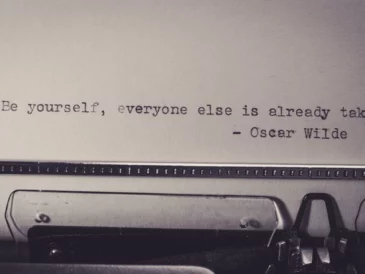Providing a satisfying experience for users now requires more than just careful consideration of design. Rather, there ought to be a collaboration between the creative department and the content creators. As stated by Engage Platform in an article about the Content Marketing Trends in 2023, “Sites and apps with high-quality content are more likely to attract and retain users than those with subpar writing and design.”
It is possible to change a reader’s mind through the use of content such as videos and images. The purpose of content strategy is to bring all of these elements into harmony so that the end product appears to be deliverable. To put it another way, content strategy serves the function of glue, holding a huge project together. It is a strategy for the production, distribution, and administration of content that is usable and helpful.
Integration of these two pillars is both critical and difficult due to the proximity of technology and research to which they both pertain. Content strategy and user experience are at this threshold. You can develop a content strategy by highlighting the goals of your user, recognizing those goals, and distributing exactly what is required from the strategy.
Why Content Strategy is So Crucial for User Experience
Weak content could never provide an excellent user experience. On the other hand, if the content is well-structured and contains all of the relevant information that a user requires, it will contribute to the development of a positive user experience. The following are some of the specifics that a writer ought to focus on to guarantee that their content provides an excellent user experience:
Readability Achieved Through Transparency
Creating content that is readable, comprehensible, and straightforward to scan does not necessarily imply cutting down on its overall length; instead, it refers to improving the content’s readability and accessibility. Make sure that your content has an understandable structure, complete with suitable headers and sub-headers to support them. Adding suitable visuals to the content can also be of assistance in this regard.
Exceptional Architecture of the Information
Developing the most effective information hierarchy requires careful consideration of your content marketing strategy. It is crucial to arrange the content in such a way that it is made accessible in a hierarchical fashion to the user. You can make a hierarchy by putting more of an emphasis on how the content appears when it is displayed on a specific web page. The readability of the content and the user’s ability to comprehend it are both improved when the layout is done correctly. These days, it’s all about making connections through the real content, to the point where the layout itself is sufficient to capture the whole intended purpose.
Putting Users Front and Center at All Times
When the writer is immersed in the process of gathering information and putting together content, he or she may lose track of the audience for whom the piece is intended. Incorporating the most fundamental rule of user experience design, which is to always put the needs of the users first, allows one to derive the greatest potential advantages from content strategy. User personas should be created in conjunction with the UX team whenever new content is being developed.
Optimization of Conversion Rates
Only by providing a seamless and enjoyable experience for the user is it possible to achieve high conversion rates. Concise wording, notable calls to action, and a value proposition all contribute to an improved user experience that is driven by the content being presented. Here is where developing a content strategy becomes necessary. It imparts a positive voice and message, both of which have the potential to increase conversion rates. To produce content that generates conversions:
- Find keywords that will concentrate on the customers you are targeting and that also relate to the services you offer.
- Develop improved content that is both informative and easily readable by centering it on particular keywords.
- When you are mapping the content, make sure that you only include the data that is essential at that specific moment. To accomplish this, engage in a round of brainstorming on every conceivable question that a user could perhaps ask in each section. Based on this, you should create your content in such a way that it is simple for your customers to find what they’re looking for.
How Words and Pictures Affect Behavior

The Way Users Interact With Content on Smartphones Has Evolved
The introduction of mobile phones has had a significant impact on shortening people’s ability to focus for extended periods. Skimming and glancing have largely replaced more traditional forms of information consumption among users; reading has largely given way to skimming and glancing. This indicates that the majority of users are satisfied with the content that is easily grasped at a glimpse.
Individuals Are on the Lookout for New Experiences That Mesh Well With Who They Are
To sustain the reader’s interest for a longer period, there should be no discernible break between the content and the design of the page. This indicates that you ought to engage with the user using both the design and the content together, an approach that some people refer to as information interplay.
If you combine the design hierarchical system with quality content, the user will be compelled to keep scrolling down an unending stream of content, just like they do on Facebook. It can be challenging for those who are responsible for creating content to establish a connection with the reader on both a linguistic and a spatial level.
What’s The Point?
You never can completely take your users away from the process of designing content. Both the design and the content ought to be able to speak for themselves. Finding solutions to these problems will assist you in connecting with the young audiences you are targeting.
The Mobile-first Philosophy Results in an Improved User Experience
Consumers in today’s market enlighten themselves through independent research before making a purchase decision. When it comes to shopping, electronic devices have surpassed the significance of traditional stores, so the design and content of your website must be as comprehensive as possible. Providing modern users with an e-commerce experience that caters to their needs will enable them to make decisions more quickly.
Webpages that have a wealth of content make it possible for visitors to access all of the important information that is pertinent to their needs. The content may consist of recent industry developments, instructive tutorials, in-depth product information, or insightful market data.
What’s The Point?
A well-designed website makes it easier for visitors to stay on the page, while informative articles clear up any questions they might have. However, the combination of the two results in the two most important characteristics that will propel your company to the forefront: loyalty and trust.
Introducing Fun to Your Layout and Design
It is approximated that a user will only remain on your website for between 10 and 15 seconds. If you’re able to formulate a concise proposal in terms of value, a user may be persuaded to remain on your webpage for an extended period.
People are always looking for new experiences that speak to them on a deeper level, and evoking different feelings in them is a great way to help build those kinds of encounters. Because of this, brands should always have an emotional charge to provide an outstanding experience for their users.

It is essential to the process of developing such experiences to actively listen to and comprehend the requirements of the customers. Explain to customers what your company is known for and how using your product will improve their lives. Do not simply copy and paste some content and then expect your clients to be able to connect with what you have provided. Increasing the understanding of your target audience by constructing narratives around your brand. Consider how Steve Jobs was able to weave a narrative around Apple that captivated the attention of a significant number of consumers.
Developing a fantastic user experience now requires more than just a focus on design; it also requires careful attention to content. Rather, there ought to be a collaboration between the creative department and the content curators.
What’s The Point?
It is not enough to make your website mobile-responsive while also giving it a pleasing aesthetic and following best practices. The success of your content is dependent on how effectively it relates to the users you have targeted while simultaneously satisfying their desires or requirements. It is impossible to forge a meaningful connection without first sharing a story. Take a narrative approach, keep things straightforward, and think about the big picture. This will pay for itself in terms of time spent on-site as well as leads generated while the process is being carried out.
Removing the Divide Between the Writers and the Designers
The propensity of a writer is to speak excessively, whereas the vocabulary of a designer is more constrained. If you ask a writer what color looks best, they will tell you how your preference differs from theirs and explain why they think it’s better. If you ask a designer which color works best, they will display the full-color palette and help you choose the right one.
It is the only solution that is even remotely possible to encourage the 2 teams to communicate with one another to address the differences. Open communication serves as the rock-solid base upon which content strategy is constructed, as was just mentioned. Your design will ultimately benefit from the collaborative creative effort that was put in by your team.
A Summary
Impactful results can be achieved through collaborative efforts between content strategists and design strategists. Customers are going to have an easy time connecting with and comprehending the intent of your design. The user experience is always evolving; you should let your method do the same. The user experience (UX) cannot ever be characterized independently from design. The content should have the same serious influence as the design.





